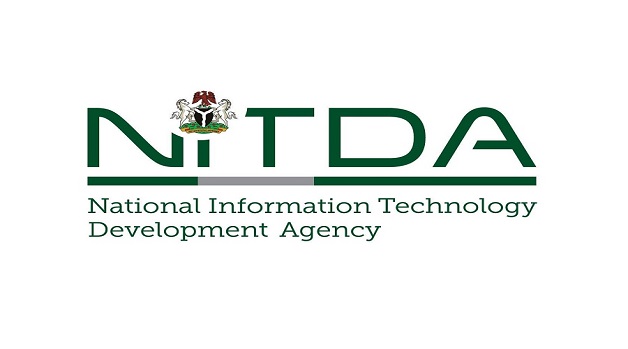E-Business
Cisco Forecasts 14-Fold Increase in MEA Mobile Data Traffic in 5 Years

Cisco® Visual Networking Index Global Mobile Data Traffic Forecast for 2013 to 2018 indicates that worldwide mobile data traffic will increase nearly 11-fold over the next four years and reach an annual run rate of 190 exabytes by 2018.
However, Middle East and Africa are expected to witness 14-fold increase during the period.
The projected increase in mobile traffic is partly due to continued strong growth in the number of mobile Internet connections, such as personal devices and machine-to-machine (M2M) connections, which will exceed 10 billion by 2018 and be 1.4 times greater than the world’s population (United Nations estimates 7.6 billion people by 2018).
In terms of mobile data traffic growth rates over the forecast period, the Middle East and Africa region is projected to have the highest regional growth rate.
By 2018, the Middle East and Africa will have a 70 percent CAGR and 14-fold growth while Central and Eastern Europe will have a 68 percent CAGR and 13-fold growth.
Asia-Pacific will have a 67 percent CAGR and 13-fold growth while Latin America will have a 66 percent CAGR and 13-fold growth.
North America will have a 50 percent CAGR and eight-fold growth; and Western Europe will have a 50 percent CAGR and seven-fold growth.
Mr. Dare Ogunlade, general manager, Cisco, Nigeria, Ghana, Liberia and Sierra-Leone said that “Global mobile data traffic will continue its truly remarkable growth, increasing nearly 11-fold over the next five years, to reach an amount in 2018 that is more than 57 times the total amount of mobile data traffic just a few years ago in 2010.
“Such growth is not only indicative of mobility becoming a critical characteristic of almost every network experience and the value consumers and businesses alike place on it, but it also represents the immense opportunities ahead for service providers who sit at the center of the Internet of Everything.”
In terms of mobile data traffic generation, the Asia-Pacific region is projected to generate the most mobile data traffic. Asia-Pacific: 6.72 exabytes per month; North America: 2.95 exabytes per month; Western Europe: 1.9 exabytes per month; Central and Eastern Europe: 1.64 exabytes per month; The Middle East and Africa: 1.49 exabytes per month; and Latin America: 1.16 exabytes per month.
Also, from 2013 to 2018, Cisco anticipates that global mobile traffic growth will outpace global fixed traffic growth by a factor of three.
The trends that are driving mobile data traffic growth include the increase in mobile users; there will be 4.9 billion mobile users, up from 4.1 billion in 2013.
In terms of mobile connections, there will be more than 10 billion mobile-ready devices/connections—including eight billion personal mobile devices and two billion M2M connections, up from seven billion total mobile-ready devices and M2M connections in 2013.
There will also be faster mobile speeds, as the average global mobile network speeds will nearly double from 1.4 Mbps in 2013 to 2.5 Mbps by 2018. Plus mobile video will represent 69 percent of global mobile data traffic, up from 53 percent in 2013.
Globally, 54 percent of mobile connections will be ‘smart’ connections by 2018, up from 21 percent in 2013. Smart devices and connections have advanced computing/multi-media capabilities and a minimum of 3G connectivity.
Smartphones, laptops, and tablets will drive about 94 percent of global mobile data traffic by 2018. M2M traffic will represent five percent of 2018 global mobile data traffic while basic handsets will account for 1 percent of global mobile data traffic by 2018. Other portables will account for 0.1 percent.
Mobile cloud traffic will grow 12-fold from 2013 to 2018, a 64 percent compound annual growth rate (CAGR).
M2M refers to applications that enable wireless and wired systems to communicate with similar devices to support global positioning satellite (GPS) navigation systems, asset tracking, utility meters, security and surveillance video.
A new “wearable devices” sub-segment has been added to the M2M connections category to help project the growth trajectory of the Internet of Everything (IoE).
Wearable devices include things that are worn by people such as smart watches, smart glasses, health and fitness trackers, wearable scanners with capability to connect and communicate to the network either directly via embedded cellular connectivity or through another device such as a smartphone via Wi-Fi and Bluetooth.
In 2013, M2M connections represented nearly five percent of mobile-connected devices in use and generated more than one percent of total mobile data traffic.
By 2018, M2M connections will represent nearly 20 percent of mobile-connected devices in use and generate almost 6 percent of total mobile data traffic.
Also in 2013, there were 21.7 million global wearable devices but by 2018, there will be 176.9 million global wearable devices or a 52 percent CAGR.
On impact of faster global mobile network connection speeds, Cisco said that, the average mobile connection is expected to nearly double from 2013 to 2018.
Mobile connection speeds are a key factor in supporting/accommodating mobile data traffic growth.
E-Business
Microsoft Servers Hacked by Chinese Groups

Chinese “threat actors” have hacked Microsoft’s SharePoint document software servers and targeted the data of the businesses using it, the firm has said.

China state-backed Linen Typhoon and Violet Typhoon as well as China-based Storm-2603 were said to have “exploited vulnerabilities” in on-premises SharePoint servers, the kind used by firms, but not in its cloud-based service.
The US tech giant has released security updates in response and has advised all on-premises SharePoint server customers to install them.
“Investigations into other actors also using these exploits are still ongoing,” Microsoft said in a statement.
The firm said it had “high confidence” the hackers would continue to target systems which have not installed its security updates.
It added that it would update its website blog with more information as its investigation continues.
Microsoft said it had observed attacks in which hackers had sent a request to a SharePoint server “enabling the theft of the key material by threat actors”.
Charles Carmakal, chief technology officer at Mandiant Consulting firm, a division of Google Cloud, told reporter, it was “aware of several victims in several different sectors across a number of global geographies”.
Carmakal said it appeared that governments and businesses that use SharePoint on their sites were the primary target.
A number of adversaries who stole material encoded by cryptography were then able to regain ongoing access to the victims’ SharePoint data, he said.
“This was exploited in a very broad way, very opportunistically before a patch was made available. That’s why this is significant,” Carmakal said.
Carmakal said the “China-nexus actor” was deploying techniques similar to previous campaigns associated with Beijing.
Microsoft said Linen Typhoon had “focused on stealing intellectual property, primarily targeting organizations related to government, defence, strategic planning, and human rights” for 13 years.
It added that Violet Typhoon had been “dedicated to espionage”, primarily targeting former government and military staff, non-governmental organizations, think tanks, higher education, the media, the financial sector and the health sector in the US, Europe, and East Asia.
Meanwhile, Storm-2603 was “assessed with medium confidence to be a China-based threat actor”.
E-Business
NIMC Warns Nigerians of Fake NIN Website

National Identity Management Commission (NIMC) has issued a public warning that it is not associated with NINcard.com.

According to the commission, the website has been circulating online to offer services for Nigerians seeking National Identification Number (NIN) services.
NIMC, in a post on its official X account on Wednesday, said, “NINcard.com is not in anyway affiliated to NIMC. Stay vigilant!”
The warning was accompanied by screenshots of fake payment receipts and OTP request pages from the website, both of which were boldly stamped “FAKE” by NIMC to alert the public.
E-Business
NITDA, API Partner Against Harmful Online Content

National Information Technology Development Agency (NITDA), in partnership with the Advocacy for Policy and Innovation (API), has convened a one-day workshop in Abuja to advance dialogue on the draft Online Harm Protection (OHP) Bill to confront harmful online content.

The bill, a rights-based, locally rooted, and multi-stakeholder initiative, is aimed at addressing the challenges of the digital age.
The event, which held yesterday, brought together government officials, civil society, academics, digital platforms, and legal experts to shape a policy framework designed to combat online ills such as cyberbullying, disinformation, hate speech, digital exploitation, and gender-based violence, while safeguarding democratic freedoms and digital inclusion.
In his keynote remarks, Kashifu Inuwa, director general, NITDA urged a paradigm shift in the way society engages with digital technologies.
“For almost two decades, we have viewed digital technology through a consumer lens. But these technologies are not just products and services. They are transforming how we live, work, and interact. They shape our politics, our society, and our democracy,” he said.
Warning against unaccountable digital power in the hands of private corporations, the DG likened the digital journey to the tale of Alice in Wonderland, where initial fascination with innovation has given way to deeper concerns about privacy, autonomy, and manipulation by big tech platforms.
“We thought we were using Google, but now we realise Google is using us. Social media, once a tool of expression, has become a tool of surveillance and influence,” Inuwa noted.
He, therefore, emphasised the urgency of developing a democratic and accountable framework. He explained that following the 2021 Twitter ban, NITDA facilitated dialogue between the government and platform operators, leading to a Code of Practice that stressed Nigeria’s sovereignty and legal standards.
According to him, the same process birthed the multi-stakeholder steering committee and the OHP White Paper in December 2024, laying the foundation for the current legislative push.
Earlier in her opening remarks, Victoria Manya, co-founder, API, observed the moral and civic necessity of the bill.
Her words: “The internet did not break society, it merely revealed its unfiltered version. Every day, Nigerians are exposed to harassment, disinformation, exploitation, and even algorithmic violence. The OHP Bill is not a war on the Internet. It is a peace offering to its users, a social contract for a digital future that is safe, inclusive, and democratic.
“We cannot answer the question of algorithmic power with unchecked state control. We must answer it with shared, rights-based governance. This bill must not be written for the people, but with them.”

 E-Financial3 days ago
E-Financial3 days agoKuda Unveils New Wallet for Multiple Currencies

 Telecom3 days ago
Telecom3 days agoTelcos Resume SIM Card Sales after 2-Week Halt

 Telecom3 days ago
Telecom3 days agoNigeria, Others Achieve 84% Adult Mobile Phones Penetration

 E-Business3 days ago
E-Business3 days agoHow AI Alert by Airtel is Transforming Mobile Security in Africa

 E-Business3 days ago
E-Business3 days agoNITDA, API Partner Against Harmful Online Content

 Telecom2 days ago
Telecom2 days agoGlo Launches Nigeria’s First-of-its-kind Device Protection Plan

 Telecom2 days ago
Telecom2 days agoTelcos: How and Why Network Services have Been Poor

 News3 days ago
News3 days agoHorn of Africa Leaders Seek Enhanced Digital Integration for Increased Regional Growth



























